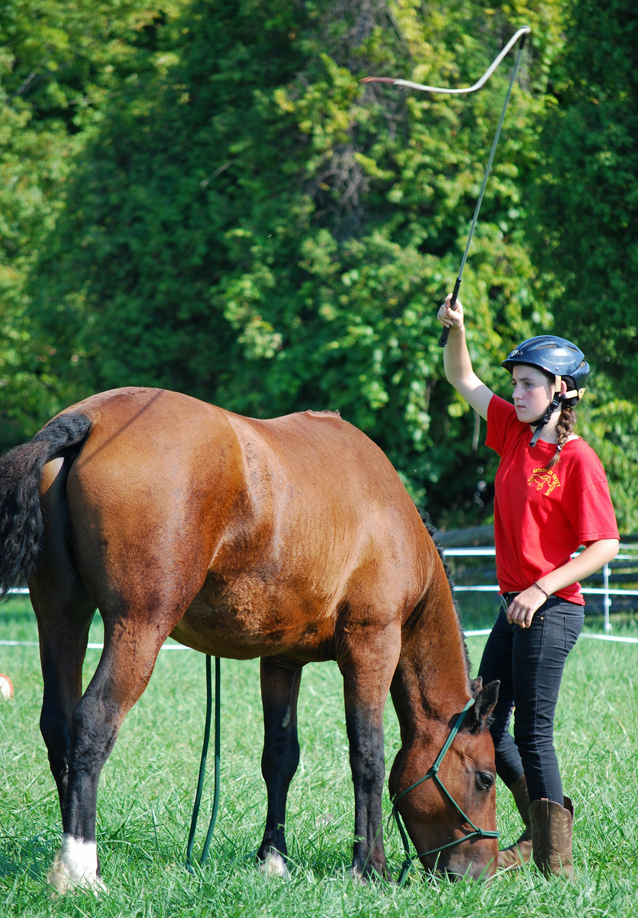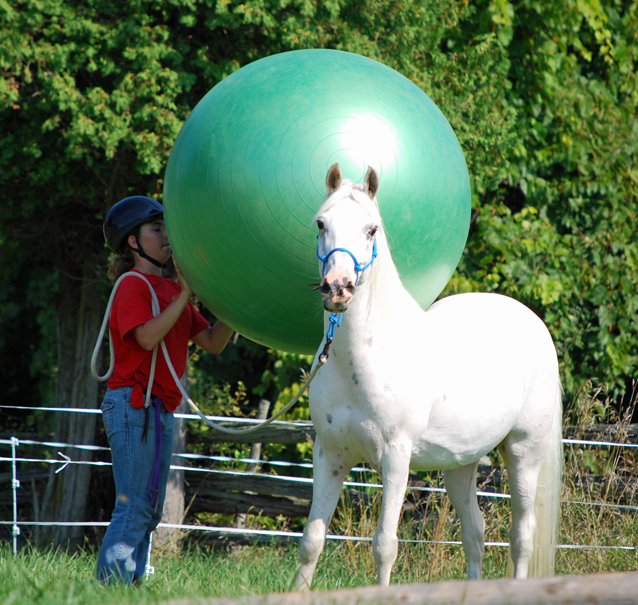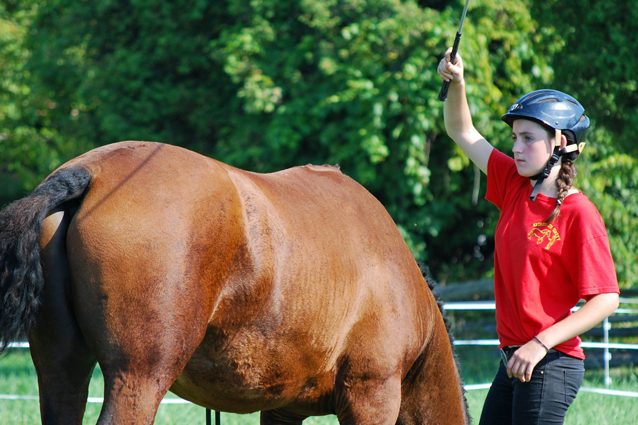
CFN – This Column of “Spirits in Unity” is being published by CFN for the community of Stormont, Dundas & Glengarry. Thanks to all those who have approached me to say that they enjoy reading this column. Knowing that someone is reading the column encourages me to keep writing about my learning experience with horsemanship. Playing Games with Horses Playing games with horses the way they want to play can help your horse become calmer and more emotionally fit. Because confusion and poor communication are major causes of introducing fear in horses, playing games can be an effective way to help your horse to trust your intent and understand what you want. There are many different types of games but it is critical that all types of games be used rather than just a few of them. When you have problems with certain types of games it will both alert you to potential difficulties with manoeuvres and also give you the solution to fix the problem. Examples: Confidence building games can help solve problems of fear, lack of trust, spooking, tension, catching, vet and Ferrier procedures. Games involving the application of steady pressure can help with problems with pushing into pressure, bracing. Rhythmic Pressure games can help with problems including crowding personal space, sideways movement, sending your horse away or bringing him back, catching and drawing him towards you. Backing away and bringing back games help with crowding personal space, transitions, collection and engagement. Games with circles can help confidence, responsibility, flexion. Various Sideways manoeuvres games can help with crowding personal space, canter leads, lateral work, suspension. Games with confined spaces can help with claustrophobia, confidence in jumping, trailer loading, wash areas, gates, narrow passages, etc. The keys to building confidence are Rhythm, Relaxation, Release and Rub: Rhythm: By keeping the rhythm of the movement the same it becomes predicable for the horse and therefore acceptable. When he can predict what is going to happen, he tends to calm down. He, like most of us fears the unknown and the unpredictable, but is confident around the familiar. Since horses are pattern learners, using rhythm help to establish a pattern of learning that he can remember. The pattern is based upon a series of predicable cues that must be repeated precisely each time in the teaching phase of his training. Relaxation: The human must be relaxed in both body and attitude. The horse will recognize if you are tense, anxious, or frustrated and you will not be viewed as friendly. Release: As you approach the horse or increase a stimulus be aware of a point at which it starts to bother the horse and immediately ’Release for Peace’ to help him gain confidence and calm down. This will reduce his fear. Release by lowering the intensity of the stimulus or increasing the distance between the horse and the stimulus. In other words, retreat and then re-approach when he begins to appear less tense. You need to always get the horse’s permission to increase the stimulus which comes when he shows relaxation – exhales, lowers his head, blinks his eyes, licks his lips, cocks a leg, puts his ears forward. To keep approaching will increase the fear and while it may eventually result in desensitization, it will be at the expense of causing a lot of stress to the horse and ruin your relationship with him. Rub: After the release allow your horse some ‘soaking time’ or thinking time to absorb what you are trying to teach him. Remember that “Slow and right beats fast and wrong”. Then rub on him. If possible allow him to physically touch your body as you rub in the love. If you are calm and relaxed, he will sense that and respond in kind to you. As one of my students puts it, “Let him come for a snuggle”. It may sound silly, but doesn’t everybody like a good hug sometimes? I personally don’t like the desensitization as this sometimes leads to training methods that rely on ‘sacking out’, a method whereby you keep applying the stimulus regardless of his reaction until he gets used to it and begins to tolerate it. This may work, but it will be at the expense of your trust-bond relationship. I prefer the term confidence building so that the horse begins to accept the stimulus and respond appropriately to the pressure without fear. That is respect that will improve your rapport with your horse. Note: When reading the signs that the horse is calm it is important to recognize that even though he is standing still, he may actually be frozen in fear and could surprise you with an explosive outburst. Make sure he is blinking, breathing regularly, his head is level with his withers (not on the ground) and his muscles are not tense. I often play a form of the green light – red light game we used to play as children, with my students. When the horse puts his ears forward that is the green light for you to interact with him, and when the ears go backward that is the signal that he is becoming concerned and you should stop or back off. Whether you are trying to build confidence in horses or humans for that matter, it is not a race. Each horse, each human will react differently depending upon their skill level and how timid they are. Confidence is something that you progressively develop. It can take from minutes to months to achieve. It is important to remember that horses and humans will lose confidence more easily that they gain it. Don’t make assumptions that your horse is now bomb proof. You need to keep revisiting the things that cause him to lose confidence. You need to test how things are going. Horses have an amazing adaptability that enables us to teach them not to be afraid of things such as swinging ropes, umbrellas, flapping tarps, clippers, saddles, humans on top of him, audience clapping, cracking whips etc. By introducing the horse to various types of objects in increasingly more extreme ways, it also increases the horse’s overall emotional fitness when it is used as an ongoing process and not just as a sacking out or desensitizing procedure.

After teaching children for 44 years I have learned a few tips that instructors can use to help improve their teaching ability. I will try to add a section at the end of each column with ideas on how to improve your teaching. Remember, if you have learned it, you own it and you can pass on what you have learned to others. I was asked, “What is the worst thing you can say to a child in a learning situation”. I think that the worse thing you can say is, “I am disappointed in You!” For all those people who give horses loving homes, and for all those kids who are wishing for that special partner, may all your dreams come true also. Whether you are just a horse lover, have dreams of owning a horse someday, or already have one, I hope these columns will give you some insight into the true nature of these magnificent creatures. I hope you will find them both informative and inspirational.


I like you advice about
“the worse thing you can say is, “I am disappointed in You!”
Good advice for parents too 🙂
The video was a great addition too !
Garry wants to let everyone know that the ‘Spirits in Unity Savvy Team’ will be on the CTV Ottawa News Regional Contact segment this Sunday at 6pm and 11:30. The story will also be posted online on the CTV Ottawa website.
If you miss the show you can view it at http://ottawa.ctvnews.ca/